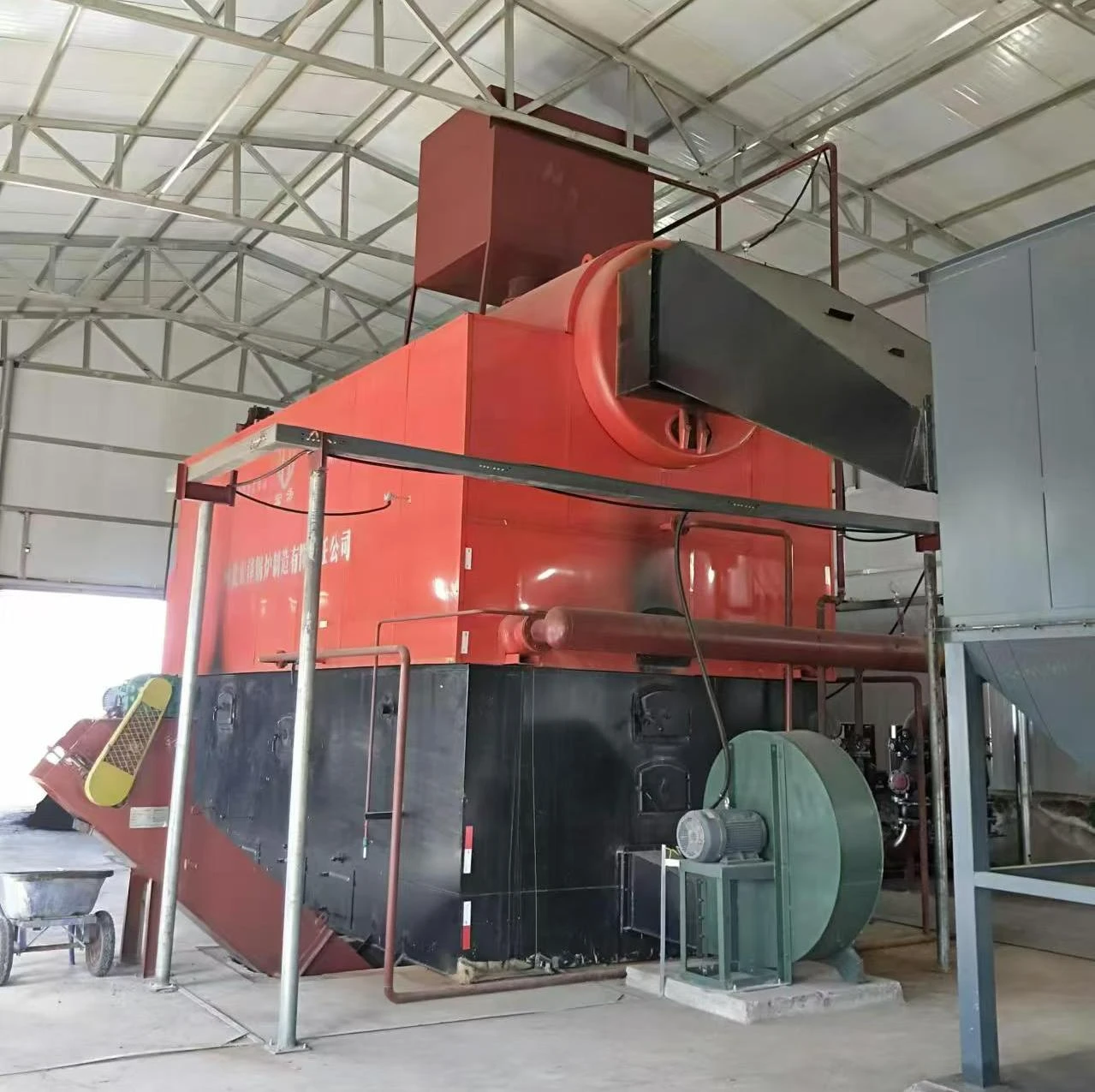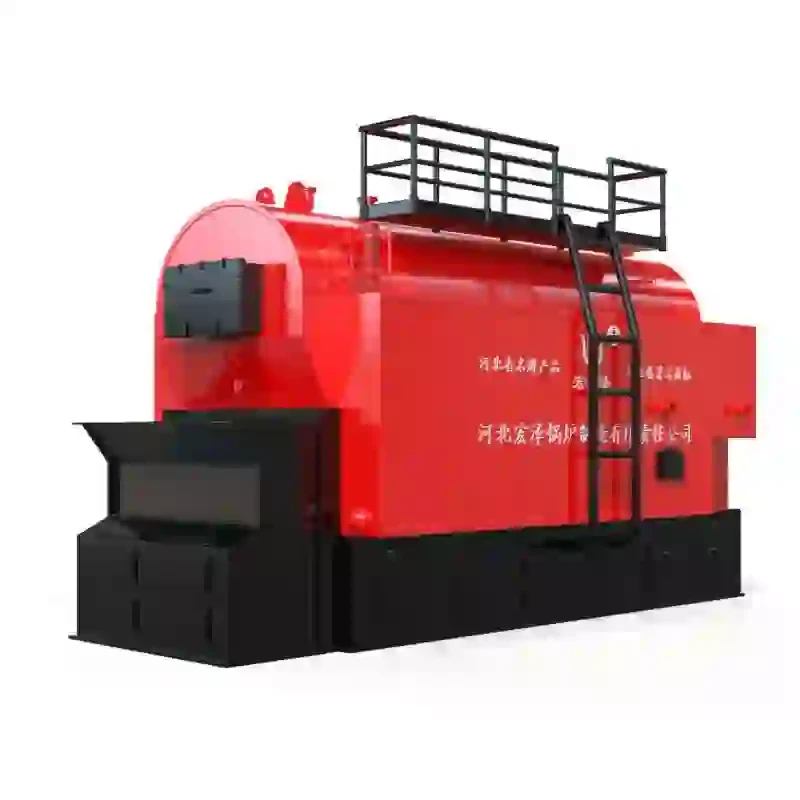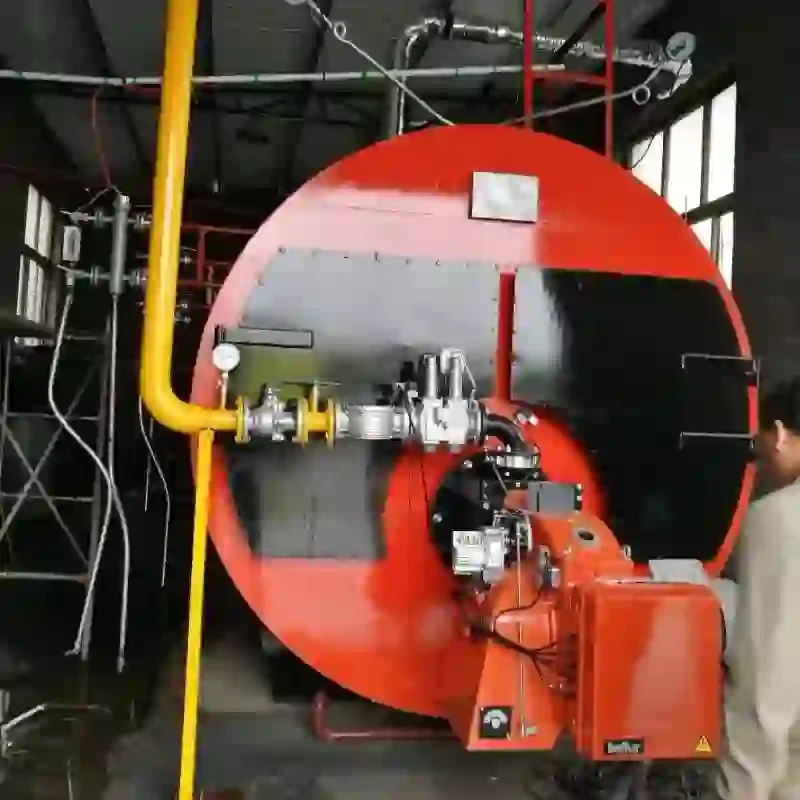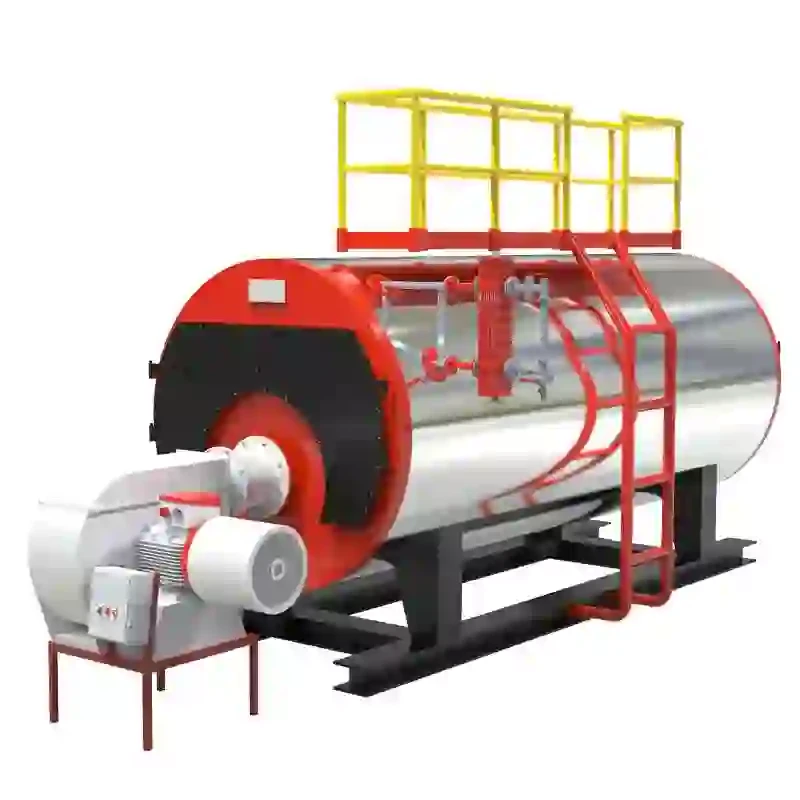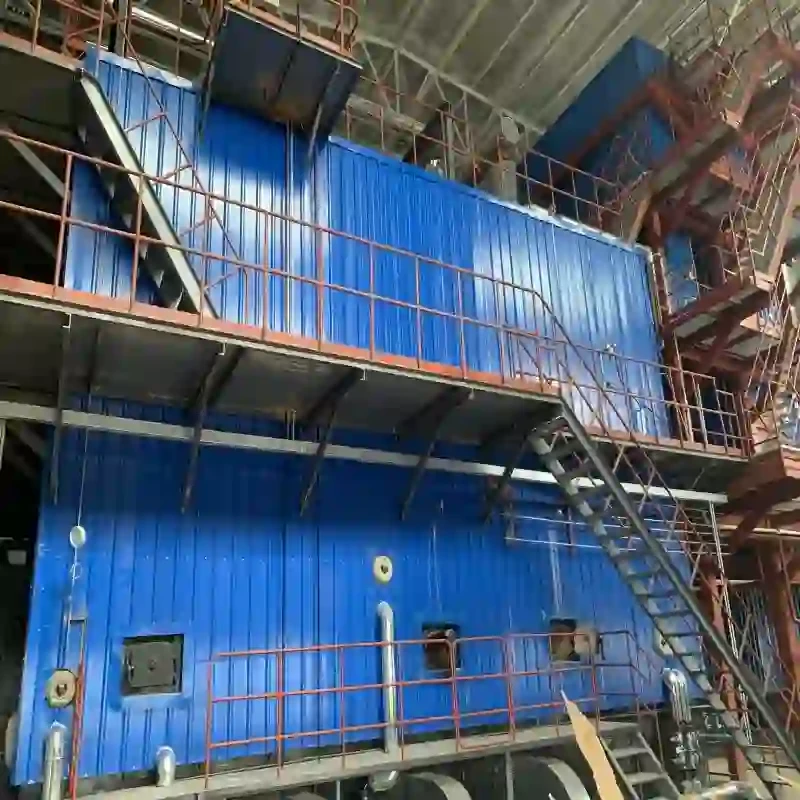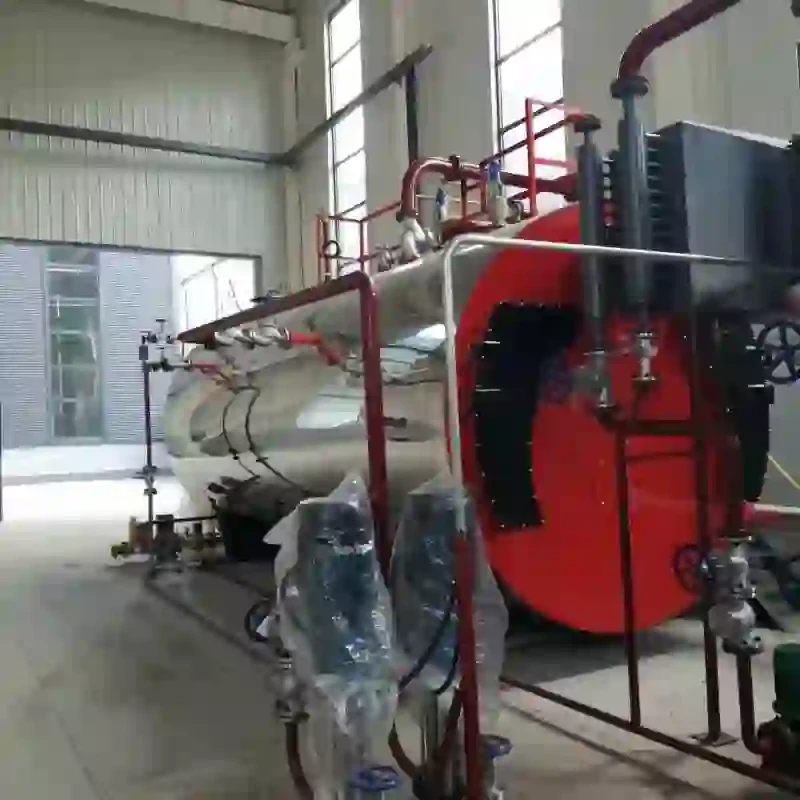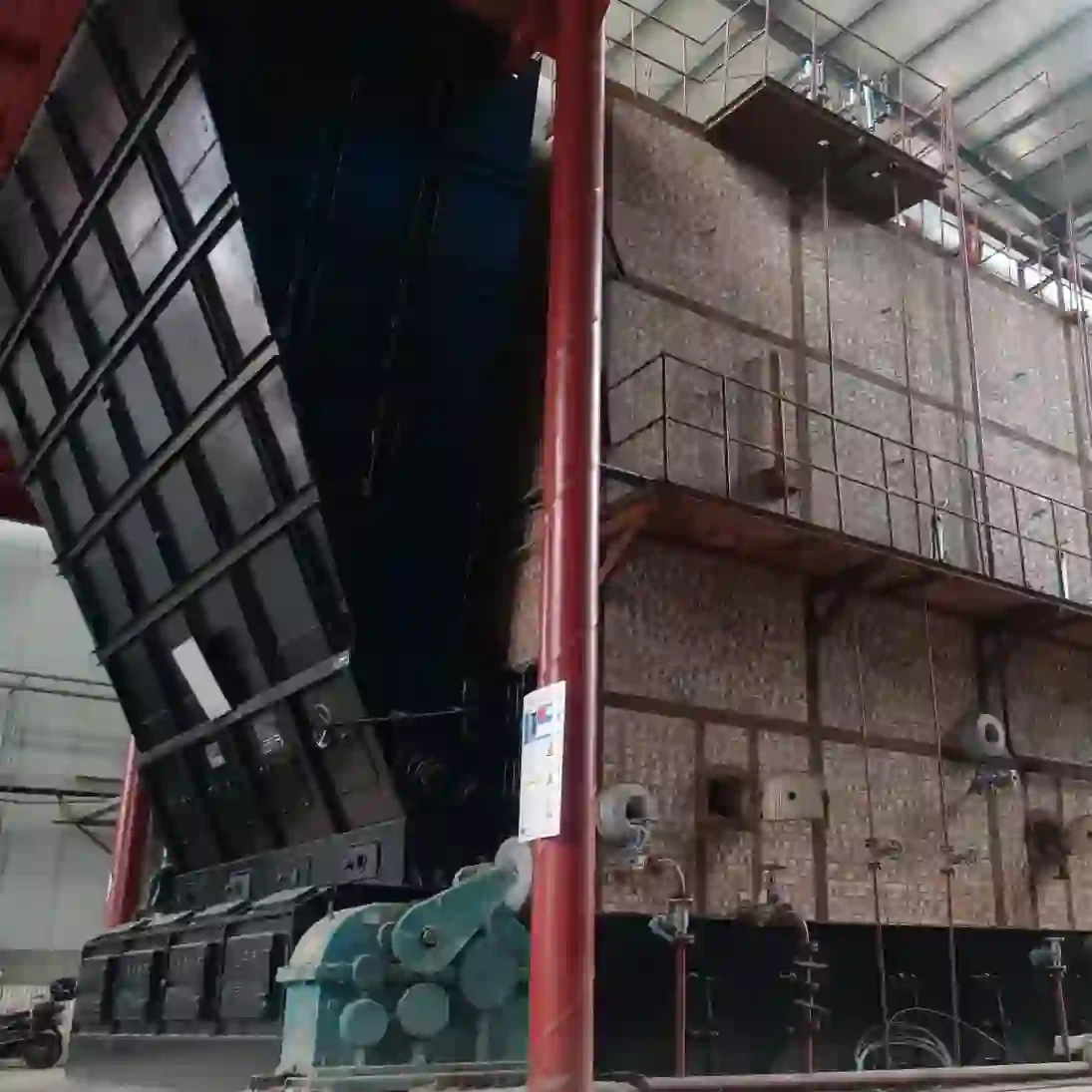
Sep . 14, 2025 09:00 Back to list
Discover Top Types of Coal Fired Steam Boilers | High Efficiency
Introduction to Coal-Fired Steam Boilers in Industrial Applications
In the realm of industrial energy generation, types of coal fired steam boiler continue to be a cornerstone for reliable and cost-effective steam production. These robust systems are vital across a multitude of heavy industries, converting the chemical energy stored in coal into thermal energy, which then heats water to produce high-pressure steam. This steam is indispensable for various processes, including power generation, heating, and driving turbines and machinery. Understanding the diverse designs and operational principles of these boilers is crucial for optimizing energy efficiency, ensuring operational safety, and meeting stringent environmental regulations in modern industrial landscapes.
The demand for efficient and environmentally compliant types of coal fired steam boiler has spurred significant innovation in design, materials, and combustion technology. From traditional grate-fired systems to advanced fluidized bed combustion, each type offers distinct advantages tailored to specific operational requirements and fuel characteristics. This detailed guide explores the intricacies of these essential industrial assets, providing insights into their manufacturing, technical specifications, application versatility, and the ongoing efforts to enhance their performance and sustainability.
Industry Trends and Market Dynamics for Coal-Fired Steam Boilers
The global market for coal fired steam boiler systems is experiencing a complex interplay of evolving regulations, technological advancements, and shifting energy policies. While there's a global push towards renewable energy sources, coal remains a significant energy input in many developing and industrialized nations due to its abundance and established infrastructure. Current trends emphasize enhanced efficiency, reduced emissions, and greater operational flexibility. Manufacturers are focusing on technologies such as Circulating Fluidized Bed (CFB) boilers and Pulverized Coal (PC) boilers with advanced flue gas desulfurization (FGD) and selective catalytic reduction (SCR) systems to meet increasingly strict environmental standards for SOx, NOx, and particulate matter.
Market data indicates a steady demand in sectors requiring high-capacity steam, such as power generation (particularly in Asia), petrochemicals, and heavy manufacturing. According to a report by Grand View Research, the global industrial boiler market size was valued at USD 13.9 billion in 2022 and is expected to grow, with a significant segment still attributed to solid fuel-fired boilers. Innovations in automation, IoT integration for predictive maintenance, and modular designs are also gaining traction, offering better control, reduced downtime, and lower installation costs for sophisticated types of coal fired steam boiler.

Modern industrial facility utilizing advanced coal-fired steam boiler technology.
Understanding the Main Types of Coal Fired Steam Boiler
The classification of types of coal fired steam boiler is primarily based on their heat exchange mechanism, fuel feeding method, and combustion technology. Each type is designed to optimize specific performance parameters such as efficiency, fuel flexibility, and emission control.
1. Water-Tube Boilers
In a coal fired water tube boiler, water circulates inside tubes, while hot combustion gases flow around the tubes. This design allows for higher pressures and temperatures, making them ideal for large-scale power generation and high-capacity industrial applications. They offer rapid steam generation, excellent thermal efficiency (often exceeding 85-90%), and greater safety due to the smaller volume of water in each tube. Common configurations include D-type, O-type, and A-type designs, often equipped with economizers, superheaters, and air preheaters for enhanced performance.
2. Fire-Tube Boilers
Conversely, fire-tube boilers pass hot combustion gases through tubes that are submerged in water within a large shell. These boilers are typically used for lower pressure and smaller capacity applications, common in process heating or comfort heating. While generally simpler in design and less expensive, they are less efficient than water-tube boilers for high-pressure steam generation and have limitations on the maximum pressure they can safely handle.
3. Grate-Fired Boilers (Chain Grate, Traveling Grate)
These boilers utilize a moving grate system where coal is fed onto a bed, and combustion air is supplied from underneath. Chain grate boilers are robust and can handle a variety of coal types, offering relatively simple operation and maintenance. They are a common choice for industrial steam generation where fuel flexibility and proven technology are prioritized.
4. Circulating Fluidized Bed (CFB) Boilers
CFB technology represents a significant advancement in coal combustion. Coal and limestone (for SOx capture) are suspended in a hot, turbulent bed of air, promoting highly efficient combustion at lower temperatures (typically 800-900°C). This lower combustion temperature inherently reduces NOx formation, and the in-situ desulfurization with limestone makes CFB boilers highly environmentally friendly. They are exceptionally fuel-flexible, capable of burning various low-grade coals, biomass, and even industrial waste.
5. Pulverized Coal (PC) Boilers
PC boilers grind coal into a fine powder, which is then blown into the furnace and combusted in suspension. This method allows for extremely rapid and complete combustion, leading to very high thermal efficiencies. PC boilers are predominantly used in large-scale thermal power plants due to their ability to generate massive amounts of high-pressure, high-temperature steam. They often incorporate advanced emission control technologies to meet stringent environmental limits.
Manufacturing Process of High-Performance Coal-Fired Steam Boilers
The production of modern coal fired steam boiler systems is a highly specialized and intricate process, demanding precision engineering, stringent quality control, and adherence to international manufacturing standards. From material selection to final testing, every stage is critical to ensure the boiler's reliability, efficiency, and long service life.
Process Flow Overview:
- Design and Engineering: Utilizing advanced CAD/CAE software, engineers develop detailed designs based on customer specifications, fuel type, and target steam parameters. This includes fluid dynamics, heat transfer analysis, and stress analysis.
- Material Procurement and Inspection: High-grade alloy steels, such as SA-192, SA-210 Gr. A1, SA-106 Gr. B for tubes, and SA-516 Gr. 70 for pressure vessels, are sourced from certified suppliers. Incoming materials undergo rigorous inspection for chemical composition, mechanical properties, and dimensional accuracy to ISO/ASTM standards.
- Cutting and Forming: Steel plates and tubes are precisely cut using CNC plasma or laser cutting machines. Plates are then formed into boiler drums, headers, and casings using hydraulic presses and rolling machines.
- Welding: This is a critical stage. Skilled welders perform various welding processes (e.g., SAW, SMAW, GTAW) on pressure parts. All welds are subjected to non-destructive testing (NDT) such as X-ray, ultrasonic, and magnetic particle inspection to ensure integrity, adhering to ASME Boiler and Pressure Vessel Code.
- Heat Treatment: Post-weld heat treatment (PWHT) is applied to relieve residual stresses and improve the material's microstructure and mechanical properties, especially for high-pressure components.
- Machining and Assembly: Components like nozzles, flanges, and fittings undergo precise CNC machining. The main boiler components, including furnace walls, superheaters, economizers, and air preheaters, are then assembled.
- Hydrostatic and Performance Testing: The assembled boiler pressure parts are subjected to hydrostatic testing at 1.25 to 1.5 times the design pressure to verify leak-tightness and structural integrity, as per ASME/EN standards. Performance tests, including efficiency, capacity, and emissions, are often conducted for larger units or specific designs.
- Insulation and Cladding: High-temperature insulation materials are applied to minimize heat loss, followed by external cladding for protection and aesthetics.
- Final Inspection and Certification: A comprehensive final inspection covers all aspects of the boiler. Certification by independent third-party inspection agencies (e.g., Lloyd's Register, TÜV) ensures compliance with international standards like ISO 9001, ASME, EN, and relevant national regulations.
The typical service life for a well-maintained coal fired steam boiler is generally 20-30 years, often extending beyond with proper refurbishment. This longevity is directly attributable to the high-quality materials and meticulous manufacturing processes.

Precision welding of boiler tubes, a critical stage in the manufacturing process.
Technical Specifications and Performance Parameters
Selecting the appropriate coal fired steam boiler requires a thorough understanding of its technical specifications and performance capabilities. These parameters directly impact operational efficiency, safety, and suitability for specific industrial demands. Below is a representative table showcasing typical specifications for various types of coal fired steam boiler.
Typical Coal-Fired Steam Boiler Specifications
| Parameter | Water-Tube Boiler (D-Type) | Chain Grate Boiler | CFB Boiler |
|---|---|---|---|
| Steam Capacity (t/h) | 10 - 200 | 4 - 75 | 20 - 400+ |
| Design Pressure (MPa) | 1.25 - 9.8 | 1.0 - 2.5 | 2.5 - 13.7 |
| Steam Temperature (°C) | 194 - 540 (Superheated) | 184 - 280 (Saturated/Low Superheat) | 225 - 540 (Superheated) |
| Thermal Efficiency (%) | 88 - 92 | 78 - 85 | 88 - 93 |
| Fuel Type | Bituminous, Anthracite, Lignite | Bituminous, Lignite, Biomass blend | Low-grade coal, Petcoke, Biomass, Sludge |
| Emission Control | FGD, SCR (External) | Dust collector, simple FGD | In-situ SOx capture, low NOx |
| Design Life (Years) | 20 - 30 | 15 - 25 | 25 - 30 |

Detailed view of boiler components illustrating complex engineering.
Application Scenarios and Target Industries
The versatility of coal fired steam boiler systems makes them indispensable across a broad spectrum of industrial applications. Their ability to deliver consistent, high-volume steam at various pressures and temperatures caters to diverse operational needs.
Key Target Industries:
- Petrochemical Industry: Used for process heating, distillation, cracking, and various chemical reactions requiring precise temperature control and substantial steam volumes. Advantages include robust design for continuous operation and resistance to corrosive environments.
- Metallurgy and Steel Mills: Essential for heating furnaces, rolling mills, and heat treatment processes. The high-temperature steam ensures consistent product quality and operational efficiency in demanding, high-heat environments.
- Power Generation: Large-scale coal fired water tube boiler systems are the backbone of thermal power plants, producing superheated steam to drive turbines for electricity generation. Modern designs prioritize high thermal efficiency and advanced emission controls.
- Textile Industry: Steam is crucial for dyeing, drying, sizing, and various finishing processes. Boilers provide the consistent steam quality required for delicate fabric treatment and energy-intensive operations.
- Food & Beverage Processing: Used for sterilization, cooking, pasteurization, and cleaning. Strict hygiene standards necessitate reliable and clean steam sources, often with specific requirements for steam purity.
- Water Supply & Drainage / Desalination: In some regions, boilers provide power or heat for large-scale water treatment facilities, including thermal desalination plants, offering efficient energy solutions for critical infrastructure.
- Pulp and Paper Industry: Steam is extensively used for cooking wood chips, drying paper, and various other processes in paper manufacturing.
In these scenarios, advantages such as energy saving through optimized combustion and heat recovery, excellent corrosion resistance from high-quality materials and water treatment, and overall operational reliability are paramount. Modern boilers are designed to minimize blowdown and optimize feedwater quality, further contributing to energy and water conservation.
Technical Advantages and Performance Excellence
Contemporary types of coal fired steam boiler are engineered to deliver superior performance, focusing on enhanced efficiency, environmental compliance, and long-term reliability.
Key Technical Advantages:
- High Thermal Efficiency: Modern designs incorporate advanced heat recovery systems, such as economizers and air preheaters, to maximize energy transfer from flue gases to feedwater and combustion air, achieving efficiencies often above 90% for large water-tube boilers.
- Advanced Combustion Technology: Technologies like Fluidized Bed Combustion (FBC) and Pulverized Coal combustion with low-NOx burners optimize fuel utilization, reduce unburnt carbon, and minimize harmful emissions. FBC, in particular, offers inherent desulfurization capabilities.
- Robust Construction and Material Quality: Utilizing high-strength alloy steels for pressure parts and advanced welding techniques ensures structural integrity and extended service life, even under high-pressure and high-temperature conditions. This contributes significantly to corrosion resistance and overall durability.
- Sophisticated Emission Control: Integration of Flue Gas Desulfurization (FGD), Selective Catalytic Reduction (SCR), and efficient baghouse filters or electrostatic precipitators (ESPs) drastically reduces SOx, NOx, and particulate matter emissions, helping industries meet stringent environmental regulations.
- Operational Flexibility and Automation: Modern boilers are equipped with sophisticated control systems (DCS/PLC) for automated operation, precise load following, and optimized fuel-air ratios, leading to stable steam output and reduced manual intervention.
- Enhanced Safety Features: Comprehensive safety interlocks, redundant control systems, pressure relief valves, and continuous monitoring systems ensure safe operation and prevent critical failures.
These advantages collectively lead to significant operational savings, reduced environmental footprint, and greater peace of mind for industrial operators relying on consistent and efficient steam generation.
Vendor Comparison and Customized Solutions
When investing in a coal fired steam boiler, choosing the right manufacturer is as crucial as selecting the right boiler type. Leading coal fired steam boiler manufacturers distinguish themselves through their engineering expertise, product quality, after-sales support, and ability to offer tailored solutions.
Key Factors for Vendor Comparison:
- Technological Prowess: Assess the manufacturer's R&D capabilities, patents, and adoption of advanced combustion and emission control technologies.
- Certifications and Compliance: Verify adherence to international standards like ISO 9001 (Quality Management), ASME (Boiler and Pressure Vessel Code), EN (European Standards), and relevant national regulations (e.g., Boiler Regulations in specific countries).
- Experience and Track Record: Look for manufacturers with extensive years of service and a strong portfolio of successful installations in similar industries. Partner clients and testimonials offer valuable insights.
- After-Sales Service and Support: Evaluate the availability of spare parts, technical assistance, maintenance contracts, and local service networks.
- Customization Capabilities: The ability to design and fabricate boilers tailored to specific site conditions, fuel characteristics (e.g., low calorific value coal, lignite), steam capacity, pressure requirements, and emission limits is a significant differentiator.
Customized Solutions:
Recognizing that no two industrial operations are identical, leading manufacturers excel at providing bespoke boiler solutions. This customization extends to:
- Fuel Flexibility: Designing combustion systems optimized for specific coal grades, including blended fuels or co-firing with biomass.
- Output Parameters: Adjusting steam capacity (e.g., coal fired steam boiler price varies significantly by capacity), pressure, and temperature to precisely match process requirements.
- Footprint and Layout: Tailoring boiler dimensions and auxiliary equipment placement to fit existing plant layouts or limited space.
- Emission Control Systems: Integrating specific flue gas treatment technologies (e.g., advanced ESPs, fabric filters, wet/dry FGD, SCR) to meet local environmental regulations.
- Automation and Control: Implementing specific DCS or PLC systems compatible with existing plant infrastructure and operational preferences.

A customized coal-fired steam boiler solution integrated into an industrial plant.
Real-World Application Case Studies & Customer Experience
The practical success of different types of coal fired steam boiler is best demonstrated through actual implementation and customer feedback. These case studies highlight the tangible benefits of well-engineered and properly installed systems.
Case Study 1: Large-Scale Petrochemical Complex
A major petrochemical producer in Southeast Asia required a high-capacity, high-pressure steam supply for a new expansion project. They opted for two 75 t/h coal fired water tube boiler units, designed for pulverized coal combustion. The solution incorporated advanced low-NOx burners and an electrostatic precipitator for particulate control. Post-commissioning, the client reported a consistent 90%+ thermal efficiency, achieving 30% reduction in specific fuel consumption compared to their older units. Customer feedback highlighted the exceptional stability of steam supply, which was critical for their continuous production processes, and the ease of integration with their existing plant DCS.
Case Study 2: Regional Textile Mill Upgrade
Facing rising energy costs and stricter local environmental regulations, a textile mill in India replaced its outdated grate-fired boilers with a modern 30 t/h Circulating Fluidized Bed (CFB) boiler. This move allowed them to utilize locally sourced low-grade coal and biomass blends, drastically reducing their fuel costs. The CFB boiler's inherent SOx and NOx reduction capabilities ensured compliance with new emission standards. The plant manager praised the boiler's fuel flexibility and robust performance, stating, "The new CFB boiler has not only slashed our operating costs but also positioned us as a leader in sustainable manufacturing in our region."
Case Study 3: Municipal Heating Plant Modernization
A municipal district heating plant in Eastern Europe upgraded its facilities with a new 50 t/h chain grate coal fired steam boiler. The primary goals were improved efficiency and reduced particulate emissions for urban air quality. The chosen boiler featured an optimized combustion grate and a highly efficient baghouse filter system. The project resulted in a measured 8% increase in overall thermal efficiency and a 95% reduction in particulate emissions, significantly improving air quality in the surrounding residential areas. The plant operators appreciated the boiler's reliable automation and simplified maintenance procedures.
Ensuring Trustworthiness: FAQ, Lead Time, Warranty & Support
Frequently Asked Questions (FAQs)
Q1: What is the typical lead time for a custom-designed coal-fired steam boiler?
A1: Lead times vary significantly based on boiler capacity, complexity, and customization requirements. For standard configurations, it can range from 4 to 8 months. Highly customized or very large projects may require 10-18 months, including design, manufacturing, and quality assurance processes.
Q2: What kind of warranty is offered on these boilers?
A2: Most reputable manufacturers offer a standard warranty of 12-24 months from commissioning or 18-30 months from shipment, whichever comes first, covering defects in materials and workmanship. Extended warranties or service agreements are often available.
Q3: How are emissions controlled for coal-fired steam boilers?
A3: Modern types of coal fired steam boiler integrate various technologies: for particulate matter, Electrostatic Precipitators (ESPs) or Baghouse Filters; for Sulfur Oxides (SOx), Flue Gas Desulfurization (FGD) systems or in-situ capture in CFB boilers; and for Nitrogen Oxides (NOx), low-NOx burners and Selective Catalytic Reduction (SCR) or Selective Non-Catalytic Reduction (SNCR) systems.
Q4: What after-sales support is typically provided?
A4: Comprehensive after-sales support includes installation supervision, commissioning services, operator training, routine maintenance, emergency breakdown support, and spare parts supply. Many manufacturers also offer remote monitoring and diagnostic services.
Certifications and Authoritative References
Our products and processes adhere to the highest international standards. We are certified under ISO 9001 for Quality Management Systems, ensuring consistent quality across all manufacturing stages. Our boilers are designed and constructed in accordance with major international codes, including the ASME Boiler and Pressure Vessel Code (BPVC), European Standards (EN), and various national pressure equipment directives. Third-party inspections by reputable agencies like Lloyd's Register and TÜV Rheinland further validate our commitment to safety and quality.
Conclusion
The diverse types of coal fired steam boiler continue to play a critical role in global industrial energy supply, driven by their inherent reliability, established technology, and ongoing advancements in efficiency and environmental performance. From high-pressure water-tube units powering national grids to fuel-flexible CFB systems serving process industries, the evolution of these boilers addresses the complex demands of modern manufacturing and energy generation. As industries navigate the dual challenges of operational cost optimization and environmental stewardship, strategic investment in technologically advanced and customized coal fired steam boiler solutions remains a prudent choice for sustainable industrial growth.
References
- Grand View Research. (2023). Industrial Boiler Market Size, Share & Trends Analysis Report. Retrieved from [Insert relevant industry report source, e.g., grandviewresearch.com]
- ASME Boiler and Pressure Vessel Code (BPVC), Section I: Rules for Construction of Power Boilers. (2023). American Society of Mechanical Engineers.
- International Organization for Standardization. (2015). ISO 9001: Quality management systems – Requirements.
- U.S. Environmental Protection Agency. (2017). Air Pollution Control Technology Fact Sheets: Flue Gas Desulfurization (FGD). Retrieved from [Insert relevant EPA document link, e.g., www.epa.gov]
- Babcock & Wilcox. (2018). Steam: Its Generation and Use. 41st Edition.
-
Comprehensive Guide to Steam Boiler Installation Diagram – Global Best Practices and Future Trends
NewsNov.24,2025
-
A Practical Guide to the Selection of Steam Boiler for Industrial Efficiency
NewsNov.23,2025
-
Comprehensive Guide to Steam Boiler PDF Manuals and Their Global Impact
NewsNov.22,2025
-
Discover How Steam Boiler Videos Improve Industrial Training & Safety
NewsNov.22,2025
-
Comprehensive Guide to Wood Fired Steam Boiler Design – Efficiency, Applications, and Innovations
NewsNov.21,2025
-
Comprehensive Guide to Steam Boiler Working – Efficiency & Applications
NewsNov.20,2025
Related PRODUCTS






